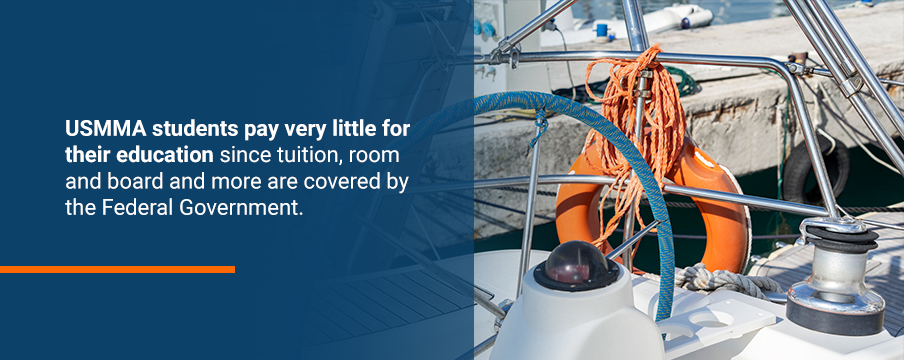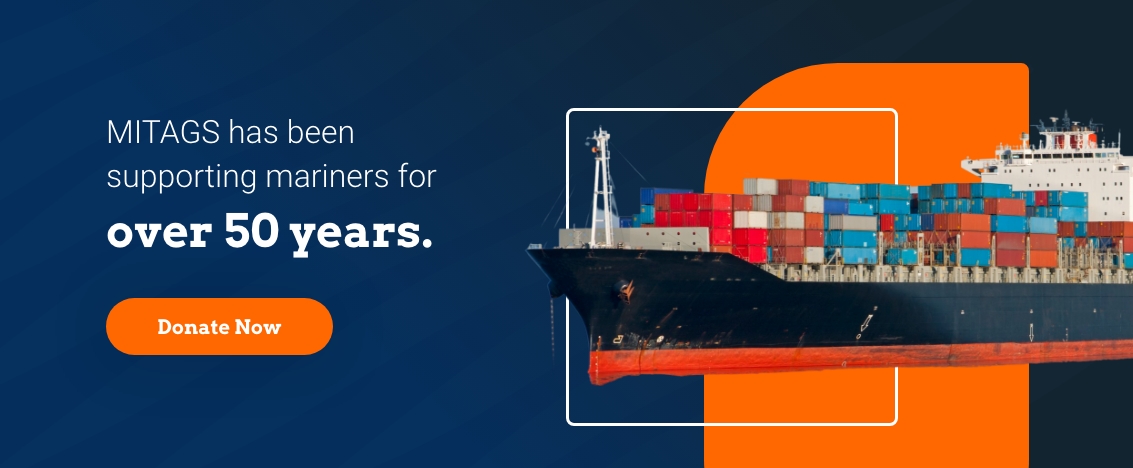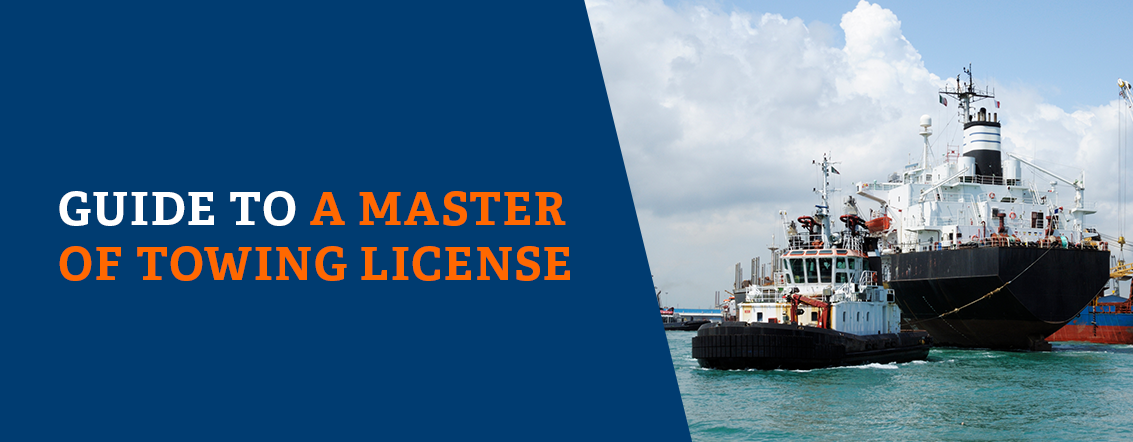Merchant Marine Academy
Advantages and Disadvantages of the USMMA

- Students graduate with several qualifications that open up multiple options for a graduate’s professional career.
- USMMA students pay very little for their education since tuition, room and board and more are covered by the Federal Government.
- The time spent at sea gives students vital hands-on experience.
- Applying to the Merchant Marine Academy is a lengthy, complicated process.
- The school is extremely selective, with an acceptance rate of around 15 percent.
- There is a commitment to serve either as an active duty member of the military or in the reserves. This isn’t necessarily a disadvantage, but it might be for some who would rather focus solely on the commercial maritime industry.
- This program takes a long time to complete in comparison to apprenticeship programs.
College Programs
- California Maritime Academy
- Florida Institute of Technology
- Maine Maritime Academy
- Maritime College – State University of New York (SUNY)
- Massachusetts Maritime Academy
- The University of New Orleans – Naval Architecture and Marine Engineering Department
- Texas A&M – University of Galveston
- Webb Institute of Engineering
Students attending any of these institutions will not have a military service obligation as they would when attending a federal service academy.
A secondary maritime education allows students to obtain a bachelor’s degree while also gaining the skill set they need to begin a career in the maritime industry. Some institutions have departments or individual programs focused on maritime knowledge and skills, while other institutions are wholly focused on the maritime industry.
Advantages and Disadvantages of College Programs
There are some advantages to attending a college with a maritime program. For one, if you are interested in becoming a mariner, but you would also like a more general education, this is a good way to earn a degree you may be able to apply to other career fields while learning more about seafaring. These types of college programs are a good option for students who are unsure of whether they want to pursue a maritime career or who may want to work as a mariner and then move into a different job.
If a student is passionate about becoming a mariner, however, going through a four-year degree program can cause an unnecessary delay to the start of their career. Apprenticeship programs, which we’ll look at next, are a more expedited option to jump-starting your seafaring career. The traditional college route can also be expensive compared to other options.
So, a college program is a good option if you want a degree to fall back on while learning more about the maritime industry. However, if you’re confident in your decision to become a mariner, there are more cost-effective and quicker ways to gain the skills you need to start your career.
On-the-Job Training and Apprenticeship

While a more traditional college education is an option to consider, it’s certainly not the only way to become a mariner. Some individuals may prefer to start working right away and undergo training as they go. This style of learning allows you to apply what you’re learning immediately and to immerse yourself in the world of seafaring, so you can be confident in your chosen career path.
The Maritime Institute of Technology and Graduate Studies (MITAGS) offers a Maritime Apprenticeship Program (MAP) for students who want on-the-job training. The program is designed to take 28 months, with a total of 26 weeks dedicated to classroom training and 360 calendar days dedicated to hands-on experience at sea. As students work through their shore-based training, they’ll immediately have the chance to apply their newfound knowledge in a real-life environment. MITAGS works to match apprentices with reputable companies who will provide the students’ service training.
The apprenticeship also meets the Standards of Training, Certification and Watchkeeping for Seafarers (STCW) needed for apprentices to receive their Able Seafarer-Deck and OICNW credentials, so they can sail internationally. Depending on the cargo-carrying capacity of the vessels the apprentice works on during their at-sea training, and the route these vessels are travelling, they are also eligible for either a Third Mate Unlimited tonnage license, Mate of 500/1600 GRT vessels, or Unlimited Inland Mate. For centuries, apprenticeships have been a well-respected means of learning a trade, and that continues to be the case for the maritime industry.
Interested in learning more about apprenticeship programs? Contact a school advisor to learn more. You should also check out our maritime apprenticeship and career guide.
Advantages and Disadvantages of Apprenticeships
There are some great advantages to choosing an apprenticeship or another type of on-the-job training over a traditional college approach. For one, you can complete an apprenticeship program in a fraction of the time it would take to complete a degree program through a college or university. An apprenticeship is also a very cost-effective schooling option. While some maritime college programs include an at-sea component, an apprenticeship is the best way to integrate on-the-job experience with classroom training.
So, are there any reasons not to choose an apprenticeship? An apprenticeship may not be the right choice for someone if they want to earn a four-year bachelor’s degree in addition to becoming qualified as a mariner. Because an apprenticeship involves so much time at sea, it is physically demanding. If a student would rather ease into a maritime career, an apprenticeship will feel like more of a hit-the-ground-running approach.
An apprenticeship is an ideal option for anyone who wants to get a jumpstart on their maritime career without taking the extra time to obtain a bachelor’s degree. With combined shore-based and at-sea training, you’ll have the opportunity to apply what you’ve learned right away and will complete the program with the licensure and confidence to take on all sorts of responsibilities.
Learn More About Maritime Apprenticeship Programs
Graduate Studies

However, if you want to take steps forward in your career, you can continue your formal maritime education through graduate studies. Just as there are graduate programs for other fields, there are also graduate programs available to mariners through the Maritime Institute of Technology and Graduate Studies (MITAGS).
One fleet education program is the AB to Mate Program. To be eligible for the program, you must have at least 1080 days of experience at sea. The program builds on your existing knowledge to help you become a Mate with an STCW Officer In Charge of a Navigation Watch (OICNW) and a USCG Third Mate Oceans or Near Coastal License. If there is a certain endorsement you would also like to obtain, such as a Medical Person In Charge (Med-PIC), you can take optional courses that will help you achieve those, as well.
If you are already a Second or Third Mate who would like to qualify for a Chief Officer or Chief Mate management position, you should consider the Mate to Master Program, an STCW-2010 training program that can help you advance in your maritime career. Because the program is geared toward officers who are already experienced, you won’t have to waste time covering information you already know. Instead, the program provides a solid stepping stone to an upgraded position.
Advantages and Disadvantages of Graduate Studies
Courses for Keeping Up-To-Date
Start or Advance Your Maritime Career With MITAGS





